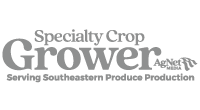Researcher Tripti Vashisth has been telling citrus growers about the benefits of using gibberellic acid (GA) on citrus trees. At the Citrus & Specialty Crop Expo, the University of Florida Institute of Food and Agricultural Sciences horticulturist said GA continues to show efficacy, based on 2022 harvest numbers. Vashisth’s Expo presentation included details from a 2016–2022 study of 10-year-old Valencia …
Factors Affecting Nutrient Concentration of Citrus Leaves
By Chris Oswalt Growers may have compelling reasons to collect and analyze citrus leaf samples at different times of the year. Current tables allow growers to interpret the results of their citrus leaf analysis based on the collection and analysis of 4- to 6-month-old leaves from non-fruiting twigs (Figure 1). This begs the question of the potential consequences of interpreting …
Best Bets for HLB-Tolerant Citrus
B9-65 Valencia received much attention from horticulturist John Chater during a virtual meeting highlighting HLB-tolerant citrus varieties developed by the Citrus Research and Education Center (CREC) Plant Improvement Team. Chater is an assistant professor at the University of Florida Institute of Food and Agricultural Sciences CREC. ORANGESAccording to Chater, pound solids per acre and yield per acre are the most …
Two Ways to Treat Ian-Stressed Trees
Give trees a bit of relief with frequent irrigation and kaolin particle film. By Christopher Vincent Hurricane Ian caused damage to orange trees, knocking fruit on the ground, twisting and breaking limbs, stripping leaves off trees and flooding soil. Although lots of damage was visible immediately, the after-effects will continue to rear their ugly heads in the months to come, …
Maximizing the Use of Soil Moisture Sensors
By Davie Kadyampakeni, Ajia Paolillo and Sandra Guzmán Citrus trees require water to be able to carry out the natural processes of growth, making food, and developing fruit and juice. To get the water from the soil, the fibrous roots do the extraneous work of absorbing the water and carrying it via the transpiration stream (or the water highway) to …
Consumer Responses to High Grocery Prices
By Marisa L. Zansler and Lijun (Angelia) Chen Throughout 2022, consumer demand for goods and services remained strong despite the highest rate of inflation in 40 years. Many Americans resumed leisure travel and purchased luxury items, such as new cars. Movement of Florida citrus products remained near 2019 levels. Consumers were spending vigorously at grocery stores even as prices increased. …
Pointers for Better Pre-emergent Herbicide Performance
Ramdas Kanissery, speaking at the Citrus & Specialty Crop Expo, offered what he called an important strategy to prevent weed outbreaks in groves: “Never let ’em germinate.” Growers can keep weeds from germinating with pre-emergent herbicide programs, said the University of Florida Institute of Food and Agricultural Sciences (UF/IFAS) assistant professor of weed science. He works at the Southwest Florida …
Rejuvenating Hurricane-Impacted Citrus Groves
By Tripti Vashisth Hurricane Ian caused extensive destruction on the Florida coast and inland, in both urban and rural areas. The state’s citrus groves had to sustain hurricane-speed winds and flooding. HLB-affected trees undergo a lot a stress, and now the hurricane has added more abiotic stress to trees. High-speed winds caused significant fruit drop and leaf drop. The goal …
A Conversation With SWFREC’s Director
Editor’s note: The September All In For Citrus podcast was recorded prior to Hurricane Ian’s impact on Florida. During the September All In For Citrus Podcast, Michael Burton discussed his recent move to Florida to become the new center director of the Southwest Florida Research and Education Center (SWFREC). Burton provided details on his background and shared his research priorities …
New Insurance Option for Florida Citrus Growers
By Ariel Singerman During the 2021–22 citrus season, the Risk Management Agency (RMA) started offering a new option to Florida citrus growers for insuring their crop. The policy is called Actual Production History (APH) and provides coverage for yield losses based on a farm’s historical records. While the Whole Farm Revenue Protection (WFRP) policy also uses farm records as a …
Extension Agents Assess Hurricane Damage
“Hurricane Ian has devastated much of Florida’s citrus industry,” said Michael Rogers, director of the University of Florida Institute of Food and Agricultural Sciences (UF/IFAS) Citrus Research and Education Center. “The harsh reality is that the 2022–2023 season will be one of the most challenging that any of us has faced.” Several UF/IFAS Extension agents made early assessments of the …
Preventing Further Hurricane Damage in Groves
University of Florida Institute of Food and Agricultural Sciences (UF/IFAS) faculty recommend actions citrus growers can take to prevent further damage to root systems and future fruit drop following Hurricane Ian. DEAL WITH PHYTOPHTHORAIf standing water has occurred in groves with phytophthora problems, growers should evaluate for root damage and treat accordingly. Floodwaters resulting from heavy rains can severely impact …
Flooded Fields and Food Safety
By Michelle Danyluk In terms of food safety, not all standing water in a field is considered floodwater. Flooding is considered the flowing or overflowing of a field from open bodies of water outside the food crop producer’s control. Events that lead to pooled water or excess standing water in a field, such as rain or a problem with an …
Addressing the Imidacloprid Shortage
Imidacloprid has been a key tool in the fight against HLB. The insecticide is particularly important in protecting young trees from the Asian citrus psyllid, the vector of HLB disease. Admire Pro SLN is currently labeled to treat young citrus trees for HLB. But a fire at the Bayer manufacturing facility where the product is made has disrupted supplies. During …
HLB Tolerance Data Expected in Early 2023
Conclusive data on trials in the Millennium Block, expected in early 2023, may reveal which of more than 5,500 trees can tolerate HLB, researchers say. The Millennium Block is at the University of Florida Institute of Food and Agricultural Sciences (UF/IFAS) Indian River Research and Education Center (IRREC) in Fort Pierce. IRREC Director Ronald Cave said the 20-acre grove, established …
Canker Resistance Progress May Help With HLB
A team of researchers at the University of Florida Institute of Food and Agricultural Sciences (UF/IFAS) has successfully identified the CsDMR6 gene, which impacts a citrus tree’s reaction to the citrus canker pathogen. Zhanao Deng and Fred Gmitter, both professors and plant breeders, are members of that team. By editing the CsDMR6 gene in the plant’s DNA to interfere with …
Fruit Displays Offer Growers Opportunities to Give Feedback
By Peter Chaires Each season, variety displays and field days offer growers, packers, processors, nurseries, marketers, flavor companies and other interested parties an opportunity to experience the latest developments in Florida’s citrus breeding programs. Each team takes its own approach to these events. Some are more focused on fruit displays and sampling, some have field tours, and others include scientific …
Sneak Peek: October 2022 Citrus Industry
The October cover story in Citrus Industry magazine is a Q&A with Florida Citrus Mutual’s new leader. While Matt Joyner is new to the role of Mutual executive vice president/chief executive officer, he is not new to the association or the citrus industry. Learn about how his experience has uniquely prepared him for the position. Joyner discusses his goals and …
CUPS Update From the Citrus Research and Education Center
By Arnold Schumann, Laura Waldo, Chris Oswalt, Napoleon Mariner, Timothy Ebert, Perseveranca Mungofa, Shankar Shrestha and Laura Cano-Castro Florida grapefruit production for the 2021–22 season was 92% less than in 2003–04, which was prior to the arrival of huanglongbing (HLB) disease [Source: U.S. Department of Agriculture National Agricultural Statistics Service, (USDA NASS)]. The decrease in Florida tangerine production for the …
When Are Cover Crops Profitable?
At 200 boxes per acre, cover crops can be profitable in Valencia orange production, according to a Citrus & Specialty Crop Expo presentation. Tara Wade and Shourish Chakravarty prepared the presentation. Wade is an assistant professor, and Chakravarty is a post-doctoral associate, both at the University of Florida Institute of Food and Agricultural Sciences Southwest Florida Research and Education Center. …





























